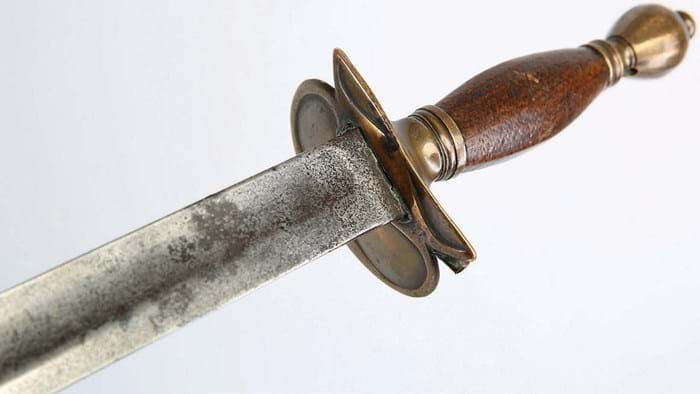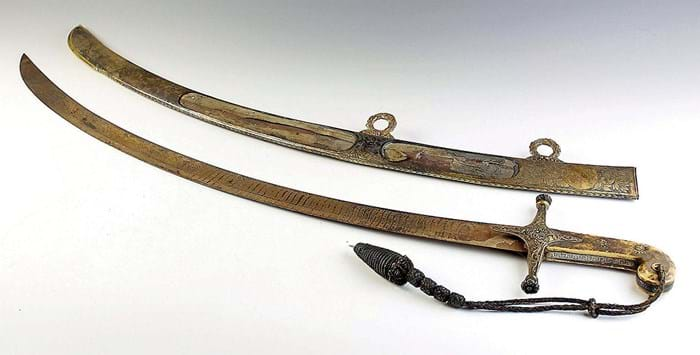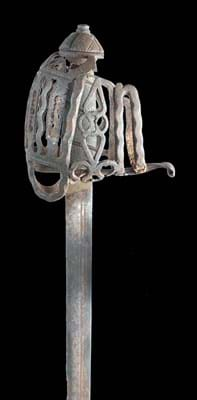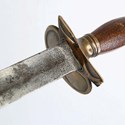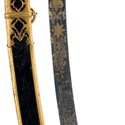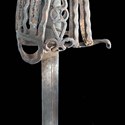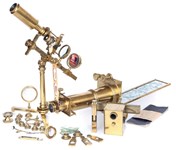A late 18th century sword offered at Chiswick Auctions (25% buyer’s premium) belonged to one of the most colourful figures in late 18th century life: Lord George Gordon.
He is remembered today (outside the pages of Dickens’ underrated Barnaby Rudge) for the Gordon Riots of 1780.
In the seven days of mob rule, tens of thousands of working-class Protestants burned and looted their way across London. Nearly 500 were shot dead after troops were finally called out.
The riots have been called the closest to revolution that Britain came to since the civil war. Gordon, as organiser of the initial protest objecting to Parliament lifting sanctions against Catholics, was charged with high treason but acquitted on the grounds that his intent was not treasonable.
He was later jailed, for defaming Marie-Antoinette of all things, and, in 1793, at the age of 42, his incident-packed life came to end, when he died of typhoid in Newgate Prison.
To many, not least his fellow prisoners, he remained a hero. This sword bore a proud, if fairly rough, caved, contemporary inscription to the grip: This sword was worn by Lord George Gordon during the antipapist riots and broken at the burning of Newgate, 1780.
The 2ft 8in (82cm) blade, broken near the grip, had since been repaired. At the March 28 west London sale it sold within estimate at £6200 to a UK collector of Hebraica.
The buyer reflected another aspect of Gordon’s life of varying but passionately held principles: at 35 he converted to Judaism and thereafter lived as a strictly observant Jew, much admired by the community.
Loyal Southwark
A less illustrious owner, but an undoubted sword of honour, was the George III example, offered at the sale conducted in Abingdon by Antony Cribb (22% buyer’s premium) on April 10.
Made by eminent London sword cutler and gunsmith Samuel Brunn (fl.1790-1820), it was decorated to its blued and frosted blade with the Royal Arms, a figure of Britannia, the figure of an infantry officer and the words: In Defence of our King and Country and a dedication to a gallant major by men of the Loyal Southwark Regiment of Volunteers.
It was one of the many London volunteer regiments formed in 1799 to meet the threat of a Napoleonic invasion.
Pitched at £4000-6000, it sold a UK museum at £10,600, helping push the sale total to nearly £250,000.
This total is a record for the young and expanding arms and armour and militaria specialist saleroom.
Shine through grime
A Mameluke sword emerged from half a century or more in a loft to attract international interest at the April 21 sale at Whitchurch.
It would, noted the Trevanion & Dean (19% buyer’s premium) catalogue, ‘need attention’ as it was in very grubby condition with rusting to the blade and damage to the fishskin scabbard.
Nevertheless, it was at core a fine silver-gilt presentation sword marked SH, Birmingham, 1818 and retailed by Mackay and Cunningham, Edinburgh. The ivory grip was decorated with yellow metal piqué work and the scabbard mounts were engraved with Britannia, trophies, thistle, lion and flowers.
Although some of the inscription was indistinct, it read 94th Regt – the division originally raised as the Scotch Brigade in 1794, being renumbered the 94th Regiment of Foot in December 1802. It was disbanded in 1818, later reforming and becoming part of the Connaught Rangers.
Undoubtedly a piece which will repay restoration, it was estimated at £2000-4000 and sold to a UK collector against online overseas competition at £5200.
Jacobite connection
The final element in a quartet of handsome bladed weapons sold in recent regional sales was an 18th century basket-hilted weapon believed to have once belonged to a Jacobite commander during the 1745 rising. It sold for £8800 at Woolley & Wallis (25% buyer’s premium) on May 3.
The sword with a 2ft 10in (86cm) long single-edged blade was accompanied by an 1829 letter from the Mackenzie family suggesting it was wielded by Charles Stewart, 5th Clan Chief of the Stewarts of Ardsheal, who commanded the Appin Stewarts and fought at the battles of Prestonpans, Falkirk and Culloden.
First received from Miss Lilly Wilson of Murray’s Hall Stirlingshire… who was a near relation of Stewart… and a staunch Jacobite to the last, the sword passed from the Mackenzie family to Sir William Martineau of Kincraig, then by descent.
The weapon was estimated at £3000-5000. The buyer, Roderick Tulloch, told ATG: “My daughter [Alison] and I are in the process of establishing a visitor centre to commemorate Scottish Jacobites, especially with reference to the ‘45 rising. Over the years I have bought items that have an interesting history and hopefully provenance, to form the basis of the exhibition.”


